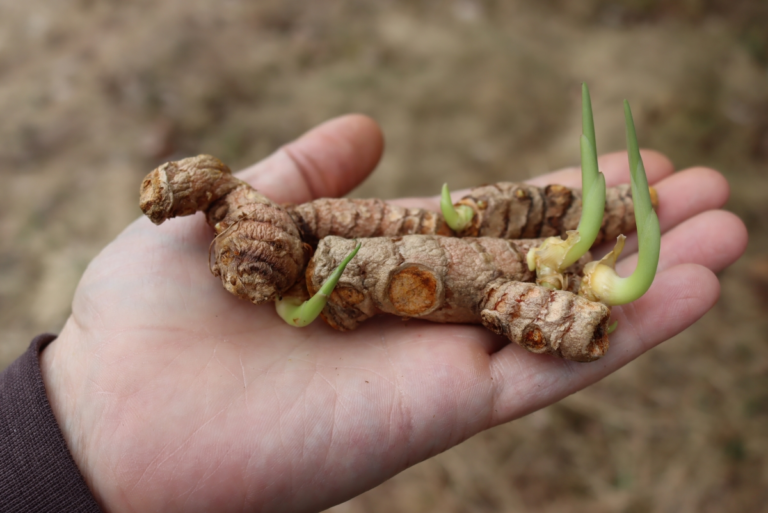Parsnips are a unique root vegetable that can add a nutty flavor to any meal. Growing parsnips from seed are not as hard as you think, but how long does it take for them to reach maturity? Understanding soil temperatures, germination rates, and the type of soil you use can make a difference in how quickly your parsnip roots will be ready for harvest.
How to Plant Parsnips

Growing parsnips is simple and rewarding. They’re nutritious and delicious, with lots of vitamins and minerals. Choose a cool area with well-drained soil share with good organic matter. Remove rocks, till soil to 6 inches, and add compost and mulch. Use fresh, high-quality hybrid seeds and plant them an inch deep, three per inch. Water weekly with one inch of water.
Thin plants to 3 inches apart and weed regularly. Harvest before soil hardens, using a fork to avoid root damage. Parsnips should be white and 6-8 inches long. Proper soil prep, quality seeds, and regular care lead to successful parsnip cultivation. Some varieties resist canker.
Choosing the Right Seed
Picking the right parsnip seed is key for growing successful crops. Consider factors like type, soil temp, and harvest time. Hybrid seeds offer canker resistance, fast germination, and growth, while heirloom seeds offer unique flavors.
Purchase fresh seeds from reliable sources. Soil temp should be 55-75F for best growth. Albion can be sown in late winter for early spring harvest. Canker-resistant varieties are crucial for winter harvest. Choose seeds suited for your specific growing conditions, like heavy soils or container gardening.
Starting and Growing
Parsnips are rewarding and nutritious with a sweet, nutty flavor. Choose the right seeds for your growing conditions. Hybrid varieties are good for quick germination and canker resistance. Heirloom seeds offer a unique flavor.
Prepare soil with compost or organic matter. Test soil pH, as parsnips prefer slightly acidic, well-draining soil. Plant seeds an inch deep and two inches apart. Provide consistent moisture and deter carrot fly with garden compost or mulch. Harvest after 90-120 days and store in a cool, dry place. Growing parsnips requires patience and attention, but the payoff is worth it.
Parsnip Plant Care

To grow healthy and tasty parsnips, proper care is essential. This includes selecting the right seeds, providing nutrients and water, and protecting against pests and disease. To start, choose hybrid or heirloom seeds from a reputable supplier and prepare the soil with compost or organic matter.
Parsnips need a soil temperature of 55-75 degrees Fahrenheit and consistent moisture. To deter pests like the carrot fly, use garden compost or mulch, plant with onions or garlic, or choose resistant varieties. Harvest parsnips after 90-120 days and enjoy fresh or store for later use. With proper care, your parsnips will thrive and enhance any meal.
Soil
Soil is crucial for gardening and agriculture. Plants rely on it for nutrients, water, and support. Texture is a key characteristic of soil, from sandy to clay. Loam is the ideal texture for gardening. Soil pH is also important. Most plants prefer slightly acidic soil. Soil fertility is critical to plant growth and can be depleted through overuse.
Drainage is important, with waterlogged soil suffocating plant roots. Organic matter like compost can improve soil structure. Soil type and pH determine which plants thrive. Understanding soil characteristics is vital for successful gardening and crop production.
Water
Water is crucial for all life on Earth. It makes up 71% of the Earth’s surface and is vital for living organisms. Water is unique and has many properties that make it important. It can dissolve many substances and transport nutrients throughout organisms.
Water also has high heat capacity and surface tension. However, water is a finite resource and is threatened by climate change, pollution, and over-use. It is important to conserve water for future generations.
Temperature and Humidity
Temperature and humidity greatly affect life on earth. Temperature is the air’s hotness or coldness, while humidity is the water vapor in the air. Different plants, animals, and humans require different temperature and humidity ranges. Poor regulation can cause discomfort and health issues.
Temperature and humidity also impact agriculture and food production. Climate change is affecting these patterns worldwide, causing damage to ecosystems and livelihoods. We must take action to preserve and protect these resources.
Fertilizer
Fertilizer improves plant growth and yields. It provides essential nutrients like nitrogen, phosphorus, and potassium. Fertilizer comes in different forms, but the choice depends on plant type, soil, and season. Test soil before choosing fertilizer.
Follow instructions to avoid over-fertilizing. Overuse harms the environment. Use eco-friendly and sustainable fertilizers like organic or slow-release. By choosing the right fertilizer and taking care of soil, we can improve plant health and yield while protecting the environment.
Pollination
Plants need pollination to reproduce. Pollination happens when pollen moves from a flower’s male part to its female part. This can happen by wind, insects, birds, or other animals. Insects like bees and butterflies are common pollinators. Wind can pollinate some plants.
Trees rely on wind pollination. Birds and bats help pollinate plants with large, colorful flowers. Pollination is important for plant reproduction and survival, biodiversity, and preserving habitats. Protecting pollinators and their habitats is essential for the environment and all its inhabitants.
Common Pests and Plant Diseases
Plant owners need to watch out for pests and diseases that can harm their plants. These can come in all shapes and sizes, from tiny bugs to fungal infections. Aphids are a common pest that reproduce quickly and suck the sap from leaves and stems. Ladybugs, lacewing insects, insecticidal soaps, and neem oil can help control aphids.
Spider mites are another common pest that live on the undersides of leaves and cause yellowing or spotting. Neem oil and insecticidal soaps can control spider mites. Fungal infections like powdery mildew can leave a white coating on leaves and stems and weaken the plant.
Proper watering and fungicidal sprays can be used to treat an infection. Root rot can also harm plants, causing stunted growth and death. Good soil drainage and fungicidal treatments can help. Preventing issues with good garden hygiene and close monitoring is key. Always take action to protect your plants.
Conclusion
Growing parsnips can be rewarding and delicious. Factors like soil, temperature, and seed quality can affect their growth time. Choose the right variety for your conditions. Plant in well-draining soil and water regularly. Beware of pests and diseases like carrot flies and root rot. Prevent and treat these issues for a healthy crop. Try planting them in rows or containers. Enjoy the sweet, earthy flavor of freshly harvested parsnips. Give them a try and see how easy they can be to grow.






